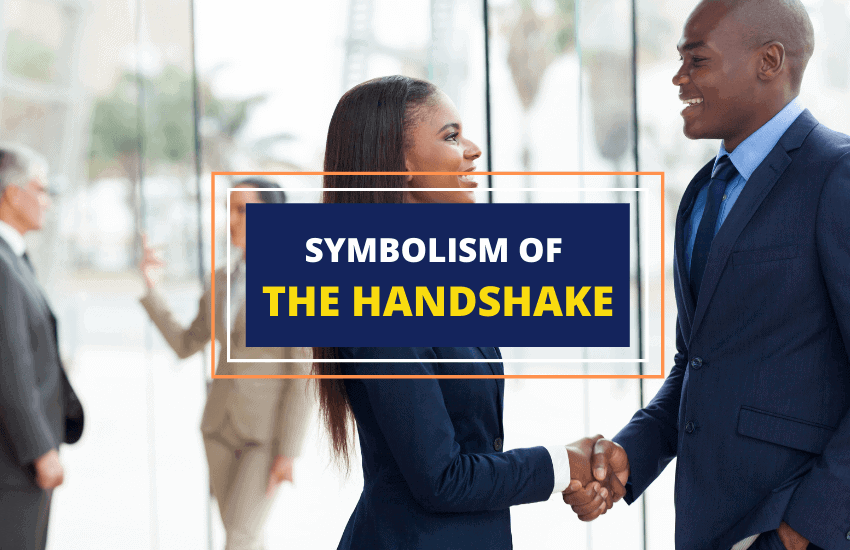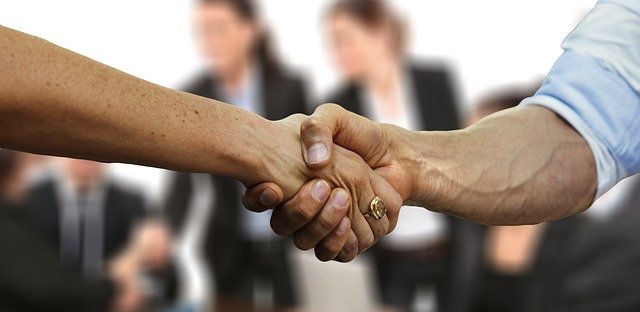
Table of Contents
Shaking hands is a practice that’s been in use for over thousands of years. It’s when two people face each other, hold hands, and shake them up and down in agreement or as a form of greeting.
Some people believe that the handshake originated as a way of expressing one’s peaceful intentions, while others view it as a symbol of good faith and trust when making a promise or swearing an oath. Although it’s been commonly used throughout history, the origin of the handshake continues to remain unclear. In this article, we’ll be taking a closer look at where the handshake first began and the symbolism behind it.
The Origin of the Handshake
According to ancient sources, the handshake dates back to the 9th century BC in Assyria where it’s said to have originated as a peace gesture. It was depicted on many Assyrian reliefs and paintings during this time. One such ancient Assyrian relief depicts Shalmaneser III, the Assyrian king, shaking hands with a Babylonian king in order to seal their alliance.
Later on, in the 4th and 5th centuries, handshaking became popular in ancient Greece and was also known as ‘dexiosis’, the Greek word for ‘greeting’ or ‘to give the right hand’. It was also a part of Greek funerary and non-funerary art. The handshake has also appeared on various Archaic, Etruscan, Roman and Greek art.
Some scholars believe that shaking hands was first practiced by the Yemeni. It was also a custom of the Quakers. The 17th century Quaker movement established shaking hands as an acceptable alternative to other forms of greeting such as bowing or tipping one’s hat.
Later on, it became a common gesture and guidelines were created for proper handshaking techniques, introduced in the etiquette manuals in the 1800s. According to these manuals, the ‘Victorian’ handshake was meant to be firm, but not too strong, and rude, violent handshaking was considered extremely offensive.
Different Types of Handshakes

The handshake continued to change over the years and today there are many different types of handshakes. While there are no strict norms when it comes to handshaking, some countries have a specific way to incorporate this gesture in greeting.
Some people combine a handshake with a hug to show affection while in some countries the gesture is considered rude and isn’t practiced at all.
Nowadays, people tend to be judged by the way they shake hands, since it reveals a lot about that person’s character as well as the relationship they have with the other person. Here’s a quick look at some of the most common handshakes and what they mean.
- A firm handshake – A good, firm handshake is where one person holds the other person’s hand firmly and with energy, but not too much so as to hurt the other person. It gives the other person a positive vibe which can solidify a good relationship.
- The dead fish handshake – The ‘dead fish’ refers to a hand that has no energy and doesn’t squeeze or shake. To the other person, it can feel as though they’re holding a dead fish instead of someone’s hand. A dead fish handshake is interpreted as a sign of low self-esteem.
- Two-handed handshake – This is a popular handshake among politicians, believed to express friendliness, warmth and trustworthiness.
- Finger vice handshake – This is when one person grabs onto the other person’s fingers instead of the entire hand. It shows insecurity and that the person is trying to keep a distance from the other.
- The controller handshake – When one person pulls the other in a different direction while shaking hands, it shows that they have a desire to dominate others.
- Top-handed shake – When one person holds his hand over the other person’s hand, horizontally instead of vertically, it’s a way of showing that he feels superior to the other person.
- Sweaty handshake – This is when the person has sweaty palms as a result of nervousness.
- Bone crushing handshake – This is where one person grasps the other person’s hand too firmly, to the point where it hurts the other. It may not be done intentionally, but if it is, it’s a sign of aggression.
Handshakes in Different Parts of the World
Shaking hands is a universal gesture but almost every country and culture has some dos and don’ts when it comes to handshakes.
In Africa
In Africa, the handshake is the most common way of greeting someone and is often accompanied with a smile and eye contact. In some regions, people prefer prolonged and firm handshakes and it’s customary for men to wait until women make the first move and extend their hand.
Namibians tend to lock thumbs in the middle of the handshake. In Liberia, people often slap hands and then finish greeting with a finger snap. In Africa’s southern and eastern regions, people show respect by holding their right elbow with the left hand during a handshake.
In Western Countries
Handshaking is as a more positive gesture in western countries in comparison to East Asian countries. It’s a common way of greeting someone, especially at semi-informal and informal occasions.
If someone offers their hand first, the other person is obliged to shake it, as it would be considered rude if they don’t. There are no rules for age and gender differences when shaking hands. Shaking hands with gloves on is considered rude, so anyone wearing gloves is expected to remove them first.
In Japan
Shaking hands is not a common way of greeting in Japan, since the traditional form of greeting is bowing. However, since the Japanese don’t expect foreigners to know the proper rules of bowing, they prefer to nod in respect instead. Grabbing someone’s hand too hard and slapping shoulders or hands is considered extremely offensive and intolerable in Japan.
In the Middle East
People in the Middle East prefer softer handshakes and consider firm grips to be rude. Some hold hands for longer to show respect. They tend to shake hands every time they meet each other and when they leave the other person. Hand shaking between men and women is not encouraged in countries among Islamic people.
In Latin America
Latin Americans and Brazilians prefer a firm handshake when meeting for the first time. If they’re comfortable with the other person, they sometimes hug or kiss the person on the cheek without shaking hands.
In Thailand
Like in Japan, shaking hands is uncommon among the Thais who greet each other with the ‘wai’, putting their palms together like in prayer and bowing instead. Most people feel uncomfortable with shaking hands and some may even find it offensive.
In China
Age is often considered before shaking hands in China. Generally, older people are greeted first with a handshake due to respect. The Chinese usually prefer weak handshakes and they often hold onto the other’s hand for a little while after the initial shake.
Symbolism of the Handshake
As we mentioned earlier, handshakes first began as a way of expressing one’s peaceful intentions towards the other person. The ancient Greeks often depicted it on gravestones (or stele). The depictions showed people shaking hands with their family members, bidding farewell to one another. It signified the eternal bond they shared in life as well as in death.
In ancient Rome, the handshake was a symbol of loyalty and friendship. Their handshake was more like an arm grab that involved grabbing one another’s forearms. This gave them the chance to check if either one of them had a knife or any other type of weapon hidden up their sleeves. Handshakes symbolized the sealing of a sacred bond or an alliance and were often regarded as a symbol of respect.
Even today, handshakes are a traditional social custom as a sign of respect and loyalty. People usually shake hands to express gratitude, offer congratulations or greet someone they meet for the first time.
Wrapping Up
Many people today prefer not to shake hands because of the fear disease and viruses. However, in international situations, shaking hands is extremely common and a polite way of greeting someone. People generally tend to notice when someone refuses to shake hands with them, since it’s considered rude and disrespectful.








